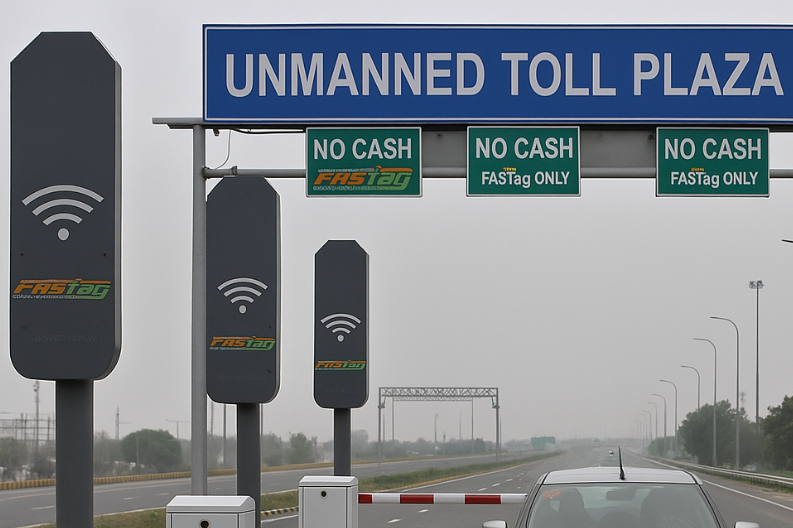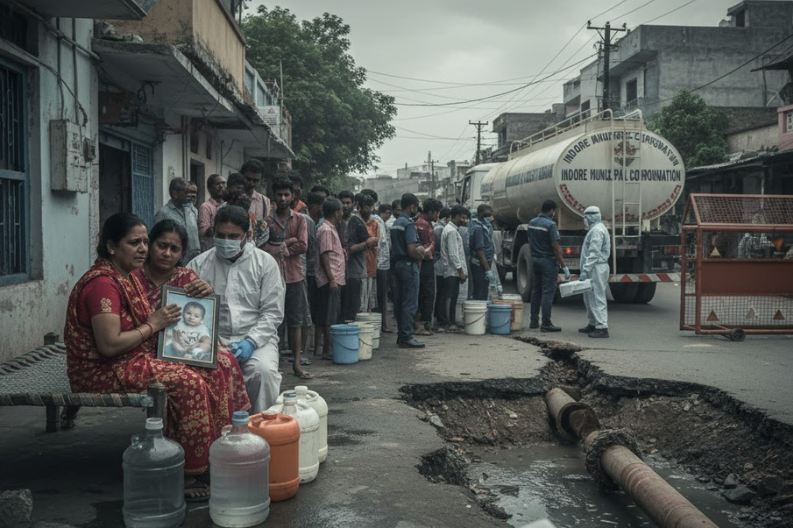India has taken a new step in modernizing its highways with the launch of the country’s first unmanned toll plaza at the Bakkarwala toll booth on the Dwarka Expressway, managed by the National Highways Authority of India (NHAI). The initiative aims to eliminate cash transactions and reduce human involvement at toll gates by relying entirely on technology, with the goal of easing congestion and improving travel times.
The plaza operates through three main technologies. FASTag scanners automatically detect and process payments when a vehicle approaches. Automatic Number Plate Recognition (ANPR) cameras capture license plates to ensure compliance and detect violations. Sensor-based boom barriers lift only after confirming successful payment, ensuring a fully cashless and controlled process.
While designed for efficiency, the system has faced teething troubles. During a recent inspection by reporters, sensors failed to detect FASTags consistently, leading to delays and traffic build-up. In several cases, vehicles were left waiting as boom barriers did not lift on time. To manage the situation, NHAI deployed staff at each lane to assist vehicles manually, undercutting the project’s vision of a fully automated toll system.
Reactions from drivers have been mixed. Some welcomed the move toward faster and cashless travel, while others expressed frustration. One motorist remarked that the sensors often failed to read FASTags correctly, forcing drivers to reverse their vehicles when instructed by staff. Many felt that the presence of personnel contradicted the very idea of an unmanned toll.
Despite the challenges, NHAI views Bakkarwala as a critical pilot project. Officials acknowledged the early issues but stressed that they are temporary and will be resolved as the system is fine-tuned. The broader plan is to expand such toll plazas across the country, which could help reduce human error, increase revenue collection, and minimize congestion.
At present, the Bakkarwala toll plaza functions more as a semi-automated system with heavy staff involvement. Still, the project marks a significant step in India’s push toward cashless tolling, aided by the growing adoption of FASTag. States like Punjab are also seeing major investments in transport modernization, suggesting more unmanned toll plazas may follow.
The experiment at Bakkarwala could prove pivotal in shaping India’s future tolling system. If the glitches are resolved and drivers adapt to the technology, unmanned toll plazas may soon become the standard, paving the way for faster and smarter highway travel.



